Showing 127 to 144 of 142 results found.
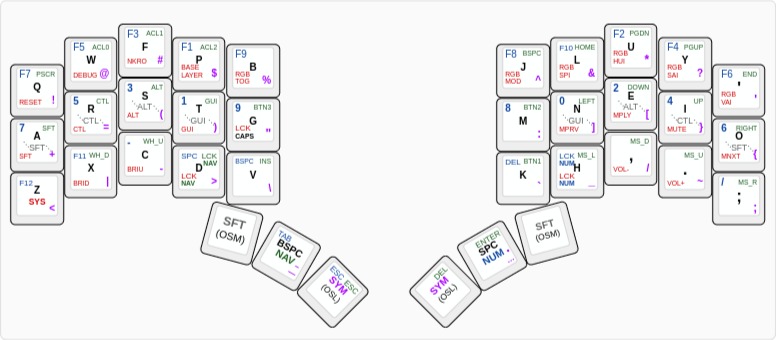
36 keys
English
9 layers
Colemak, QWERTY, Dvorak
- Symmetry is important because use-cases are hard to predict
- Whenever possible, modifiers and layer keys should be available from either hand
- Inward rolls should be leveraged not just for alphas, but also for coding/symbols
- Number order—like alpha order—should be designed to favor use of the strongest fingers
- One-shot keys can greatly reduce the strain of typing, and should be leveraged.

34 keys
English, German, Greek
6 layers
Colemak
- Timeless homerow mods
- Combos replace symbol layer
- Smart numbers and mouse layers auto-toggle off
- Unicode math and international layers
- Fully automated, nix-based local build environment
- Base keymap used for various keyboards using modular structure
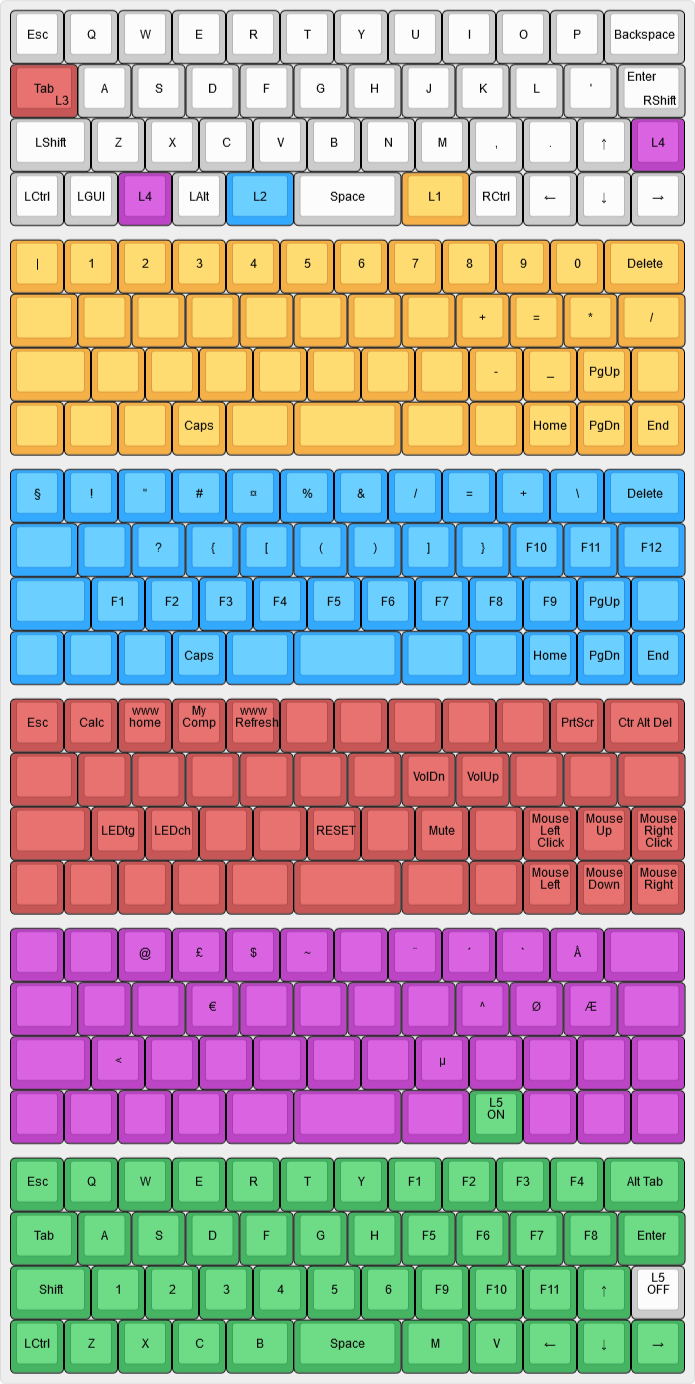
47 keys
English, Danish, Norwegian
6 layers
QWERTY
Chose to modify the default layout to include dedicated arrows on the bottom right. Layers 1-4 are modifiers, layer 5 is a toggle on gaming mode. Tab is dual function: Tap for Tab and hold for L3. So is enter: tap for Enter and hold for Right shift.

46 keys
French, English
11 layers
Colemak

34 keys
English
4 layers
QWERTY
a simple 34-key layout that makes use of 2 (primary) layers, home-row mods, & combos for many symbols.

36 keys
English
4 layers
Dvorak
A Corne/Ferris keymap with an alternative Dvorak layout that swaps IU and LM, with the bonus of swapped shift state for semicolon (;)

36 keys
English, Russian
6 layers
QWERTY, ЙЦУКЕН
- Slightly modified QWERTY layout optimized for English & Russian languages
- Mod-Tap-free Home-Row modifiers access without nasty timings
- Navigation, symbols, numbers & functional layers
- System-wide universal layouts for Windows, Linux and macOS
- Gaming layer, easy windows and tabs switcher and more...
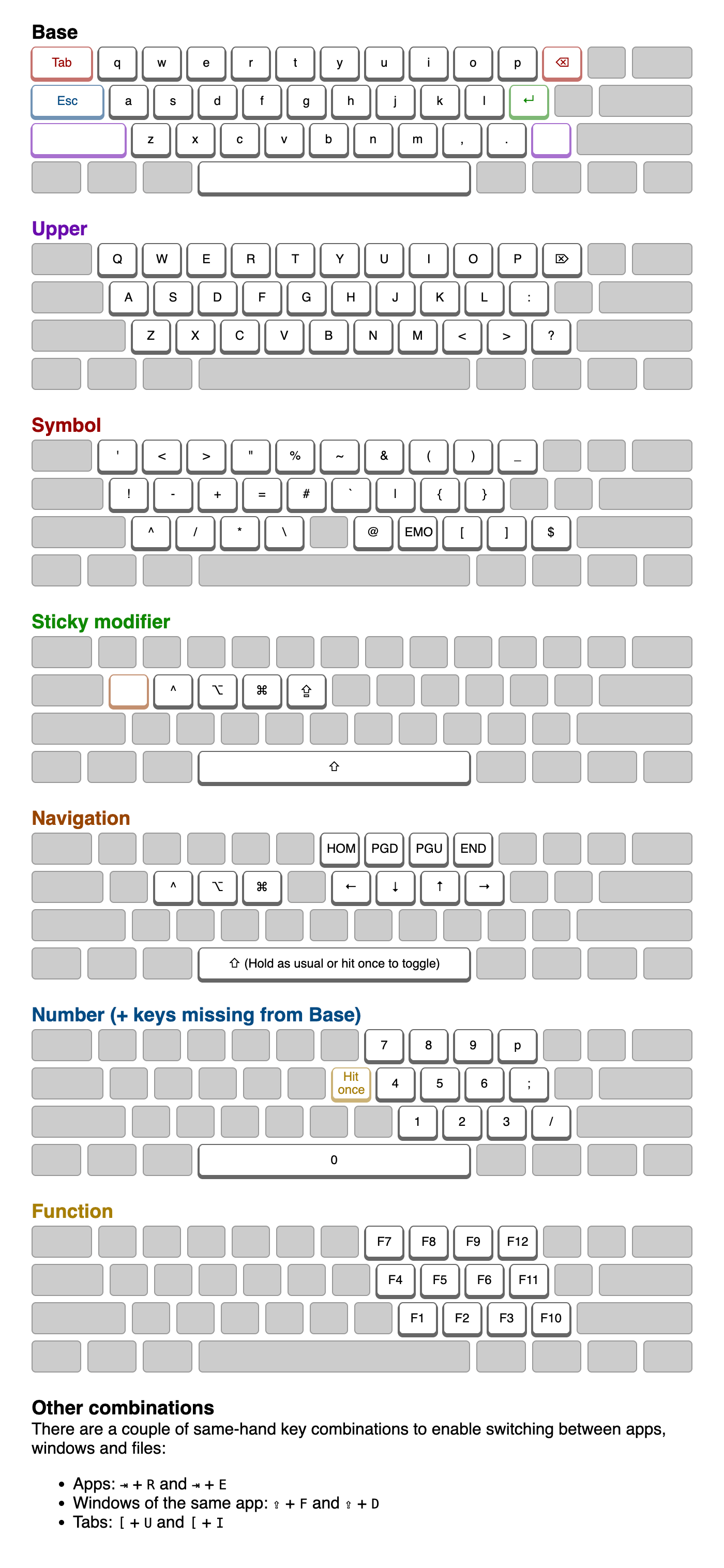
35 keys
English, Dutch
7 layers
QWERTY
Layout with two goals: to restrict as much as possible to the 30 alpha keys plus the spacebar, and to stay as close to QWERTY as possible to not mess with muscle memory and allow easy transition to traditional keyboards.
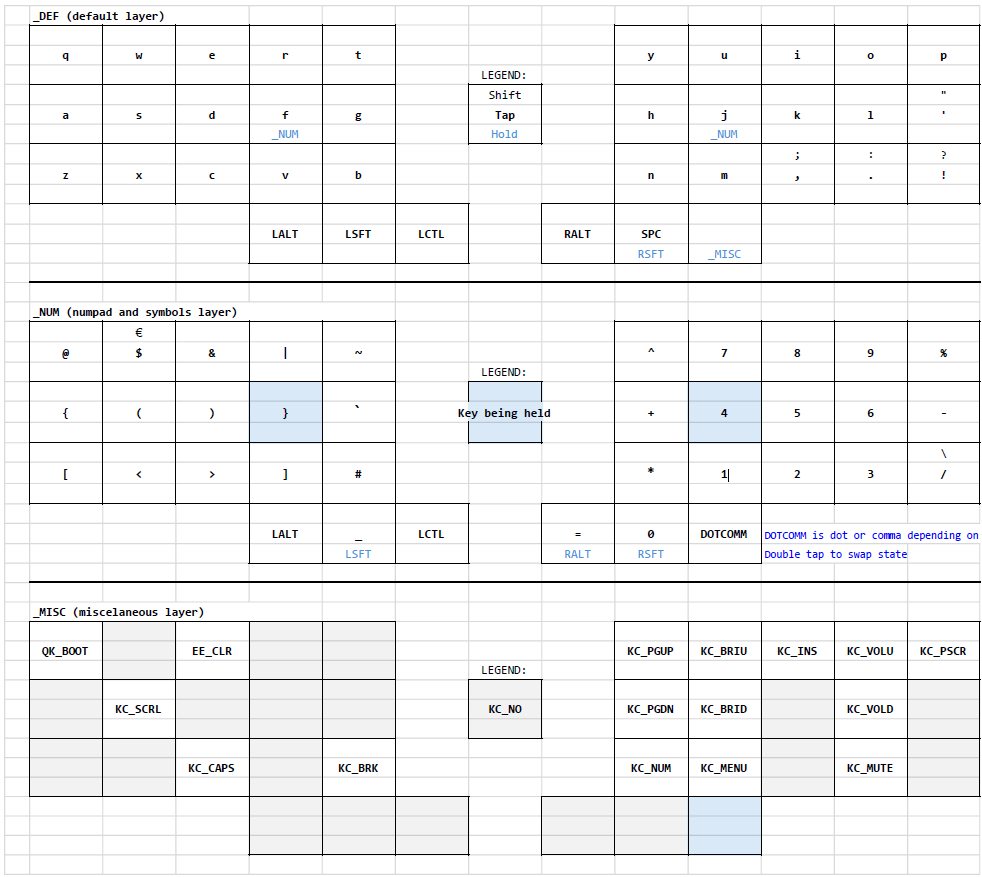
36 keys
English, Dutch
6 layers
QWERTY
A split 3x5+3 layout, which is optimized for CAD and graphic usage. It utilizes a lot of combos, and no homerow mods, and only 3 layers. It also has a (combo based) mode for one handed operation. (image does not show combos, see write-up link instead!)
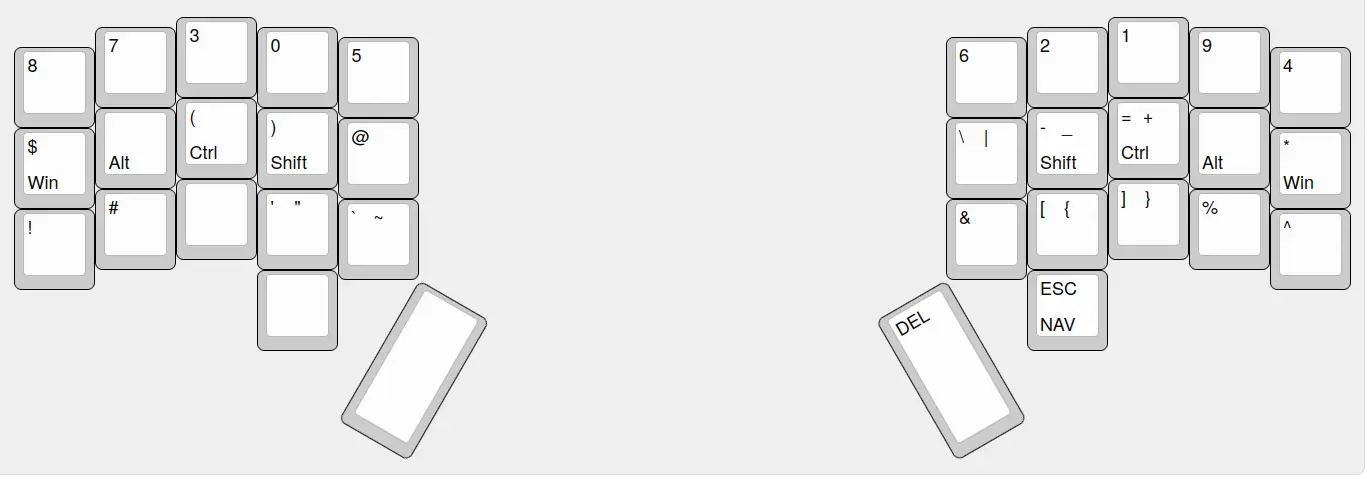
34 keys
English
6 layers
Colemak, QWERTY
Small 3x5+2 Colemak-DH Corne keymap with home row mods on all layers and an optimised number row (87305 62194).

42 keys
English
2 layers
Workman
A Workman-based Corneish-Zen, with two layers, making extreme use of tap-dance keys and some combos. Has a home-number row, and lower parens row.
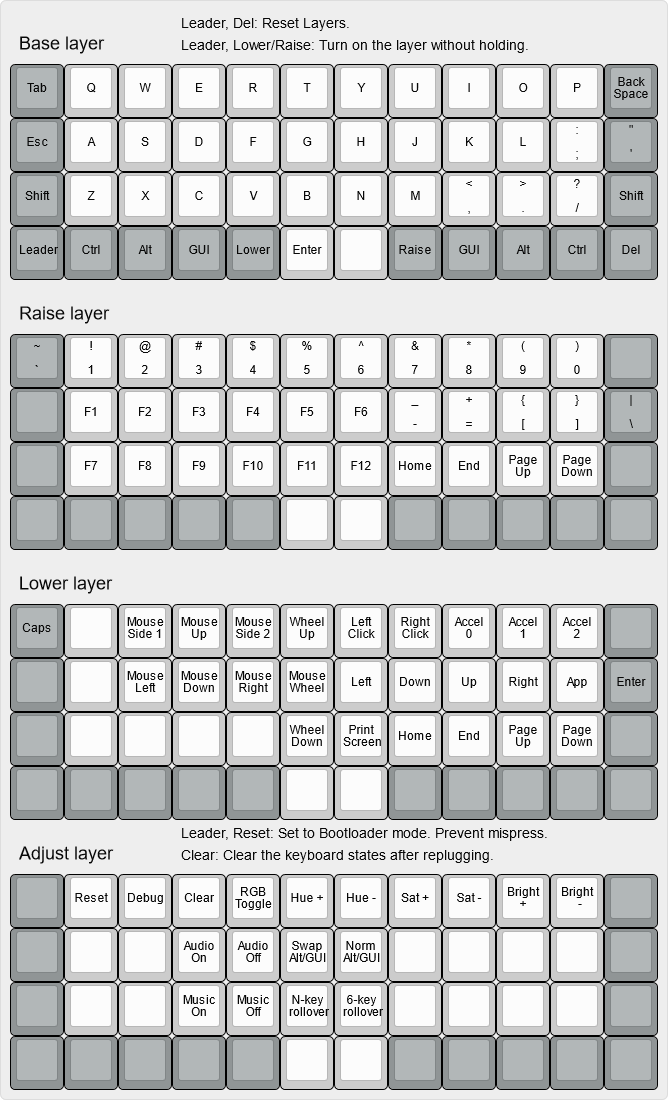
48 keys
English
4 layers
QWERTY

42 keys
English
6 layers
QWERTY
Yet another crkbd keymap which has emerged from a combination of writing and programming using Emacs on MacOS and Linux. The numeric layer has numbers on the home row and shifted symbols on the first row, with commonly used brackets on the third row symmetrically between sides. The emacs layer(s) provide both command and prefix keys.

31 keys
Russian
5 layers
ЙЦУКЕН, QWERTY
A minimalist keyboard that emerged as a symbiosis of the ideas of the Gherkin and Katana60 keyboards. Gherkin is bad because it is impossible to use when you add a space since it takes up the usual lower row of characters. Katana60 is good for everything except that it is expensive and not made by me.
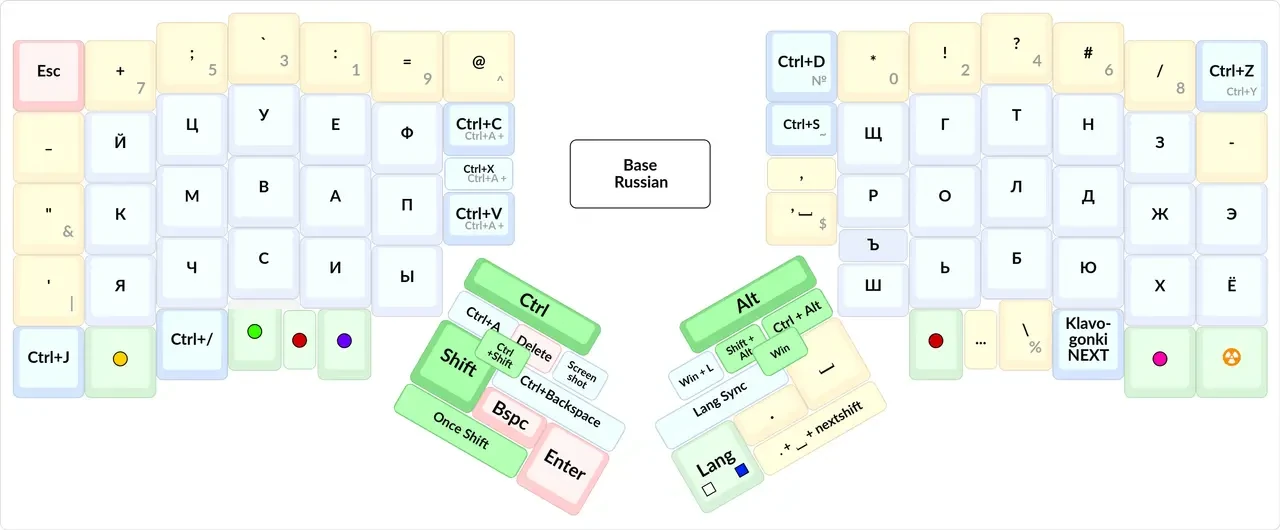
72 keys
Russian, English
12 layers
ЙЦУКЕН, Dvorak
optozorax's keymap for the Moonlander keyboard with an extremely detailed and very long write-up in Russian.

42 keys
English, Spanish
3 layers
Colemak, Dvorak, QWERTY
A mnemonic, macOS-optimized, 42 key ergonomic columnar layout for corne-style split keyboards, designed to ease the transition from standard ANSI Apple-style keyboards.













